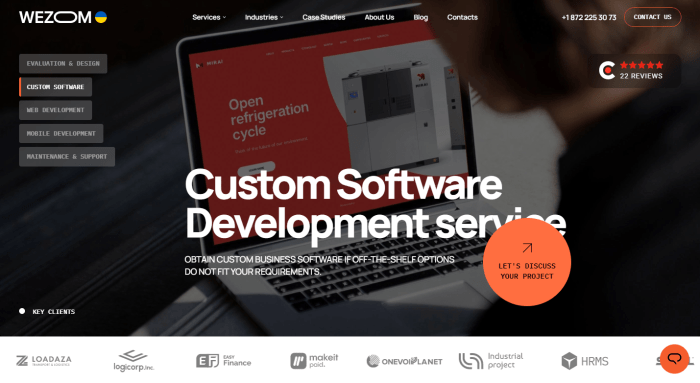In today’s rapidly evolving technological landscape, businesses of all sizes are increasingly reliant on robust and efficient software solutions. Developing these solutions in-house can be expensive, time-consuming, and require specialized expertise that may not be readily available. This is where nearshore software development partners step in, offering a compelling alternative to outsourcing to distant locations or struggling with internal development limitations.
This comprehensive guide explores the intricacies of nearshore software development, its benefits, considerations, and how to choose the right partner for your specific needs.
Understanding Nearshore Software Development
Nearshoring, in the context of software development, refers to outsourcing development work to a country geographically closer to your own. Unlike offshoring, which involves working with teams in significantly distant time zones (e.g., India, the Philippines), nearshoring leverages the advantages of a different location while minimizing the challenges associated with vast geographical distances and significant time differences. This proximity facilitates smoother communication, easier collaboration, and potentially lower travel costs.

Source: cloudfront.net
Benefits of Choosing a Nearshore Software Development Partner
- Reduced Time Zone Differences: Nearshore partners often operate within a similar time zone, enabling real-time communication and quicker response times. This facilitates agile development methodologies and accelerates project timelines.
- Improved Communication and Collaboration: The geographical proximity allows for easier in-person meetings, workshops, and collaborative sessions, fostering stronger working relationships and reducing misunderstandings.
- Cost-Effectiveness: While not always as inexpensive as offshoring, nearshoring still offers significant cost savings compared to building an in-house development team, particularly considering salary differentials and overhead costs.
- Cultural Understanding and Alignment: Nearshore partners often share similar cultural values and business practices, which can lead to more seamless integration and improved project management.
- Easier Legal and Regulatory Compliance: Working with a nearshore partner often simplifies legal and regulatory compliance compared to offshoring, especially regarding data privacy and intellectual property protection.
- Access to Specialized Skills and Expertise: Nearshore locations often boast a skilled workforce with expertise in specific technologies or industries, providing access to talent that may be scarce in your own region.
Choosing the Right Nearshore Software Development Partner
Selecting the ideal nearshore partner is crucial for project success. Here’s a structured approach to finding the right fit:
Key Factors to Consider
- Geographical Location: Identify countries that offer a good balance of cost-effectiveness, skilled workforce, and cultural compatibility.
- Technical Expertise and Experience: Assess the partner’s proficiency in the required technologies and their track record of successful projects.
- Communication and Collaboration Capabilities: Evaluate their communication infrastructure and willingness to collaborate effectively.
- Project Management Methodology: Ensure alignment with your preferred project management approach (e.g., Agile, Waterfall).
- Security and Data Protection Measures: Verify their security protocols and compliance with relevant data protection regulations.
- Client References and Testimonials: Review past projects and client feedback to gauge their reliability and performance.
- Contractual Agreements and Intellectual Property Rights: Ensure clear contractual agreements protecting your intellectual property and outlining responsibilities.
- Pricing and Payment Terms: Understand the pricing model and payment schedule to avoid unexpected costs.
Nearshore Development Locations: A Comparative Overview
Several countries are popular nearshore destinations. The best choice depends on your specific needs and priorities. Some prominent examples include:
- Mexico: Offers a blend of cost-effectiveness, skilled developers, and relatively close proximity to the US and Canada.
- Latin America (e.g., Colombia, Argentina, Brazil): Growing hubs for software development, boasting a strong talent pool and competitive pricing.
- Canada: A strong choice for companies in the US seeking a close partner with a highly skilled workforce and similar cultural values.
Addressing Potential Challenges
While nearshoring offers many advantages, potential challenges need to be considered:
- Language Barriers: While often less significant than with offshoring, language differences can still pose communication challenges.
- Cultural Differences: Even within geographically close regions, cultural nuances can affect communication and collaboration.
- Data Security and Privacy Concerns: Ensuring robust data security and compliance with regulations is paramount.
- Managing Remote Teams: Effective project management and communication strategies are crucial for success.
Frequently Asked Questions (FAQ)
- Q: What is the difference between nearshore and offshore software development?
A: Nearshore development involves outsourcing to a geographically closer country, minimizing time zone differences and improving communication. Offshore development involves outsourcing to a far-off country, often with significant time zone differences. - Q: How can I find a reputable nearshore software development partner?
A: Thoroughly research potential partners, review client testimonials, assess their technical expertise, and ensure clear contractual agreements. - Q: What are the potential risks of nearshore software development?
A: Potential risks include language barriers, cultural differences, data security concerns, and challenges in managing remote teams. - Q: How much does nearshore software development cost?
A: Costs vary depending on the location, the complexity of the project, and the size of the development team. It’s generally more expensive than offshoring but less expensive than in-house development. - Q: What are the key benefits of choosing a nearshore partner over building an in-house team?
A: Key benefits include cost savings, access to specialized skills, faster project timelines, and reduced overhead costs.
Conclusion: Nearshore Software Development Partner
Nearshore software development offers a powerful solution for businesses seeking to leverage external expertise without the complexities and potential drawbacks of offshoring. By carefully considering the factors discussed in this guide, businesses can select a nearshore partner that aligns with their specific needs and goals, ultimately contributing to the successful delivery of high-quality software solutions. Remember to prioritize clear communication, strong contractual agreements, and a thorough vetting process to mitigate potential risks and maximize the benefits of nearshoring.
References
While specific articles on nearshore development are less frequently compiled into single resources, much information can be gleaned from general software outsourcing and development articles. For reliable information on software development best practices, consider resources like:

Source: theninehertz.com
- Gartner (for industry research and analysis)
- Forbes (for business and technology news)
- CIO (for IT-related news and insights)
Call to Action
Ready to explore the benefits of nearshore software development? Contact us today for a free consultation to discuss your project requirements and find the perfect nearshore partner for your business.
Quick FAQs
What are the typical costs associated with a nearshore software development partnership?
Costs vary depending on location, team size, expertise required, and project complexity. Generally, nearshore development offers a more competitive price point than onshore development but may be slightly higher than offshore options.
How can I ensure data security and intellectual property protection with a nearshore partner?
Thoroughly vet potential partners, examining their security protocols, certifications (e.g., ISO 27001), and client references. Negotiate robust contractual agreements outlining data protection and intellectual property rights.
What are the common challenges in working with a nearshore development team?
Potential challenges include communication differences (even within proximate regions), cultural nuances affecting project management styles, and the need for clear and consistent communication channels.

Source: theninehertz.com
How do I choose the right nearshore software development partner?
Consider factors like technical expertise, experience in relevant technologies, project management methodologies, company culture, client testimonials, and location proximity. A thorough due diligence process is essential.
